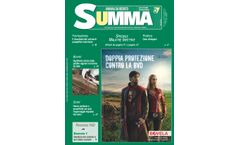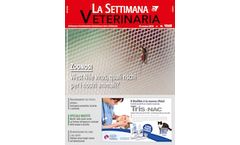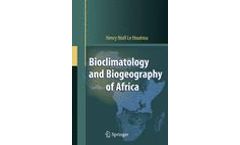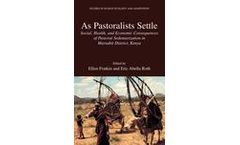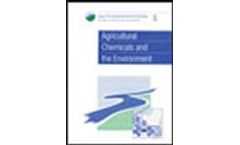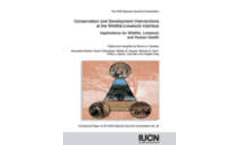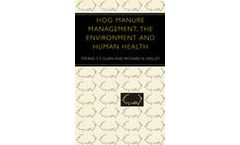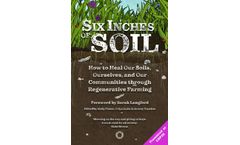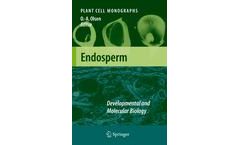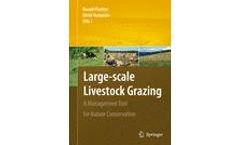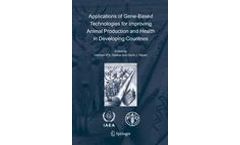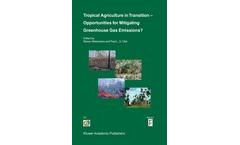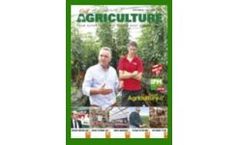Refine by
livestock books
35 books found
Showcase
The veterinary monthly magazine Summa is made up by two magazines, one of which is completely devoted to livestock. Thanks to its captivating graphic layout and to a stronger collaboration with French, English and Italian authors, Summa is able to give vets the most up-to-date scientific information in order to meet the needs of a profession requiring a more and more accurate ...
Showcase
La Settimana Veterinaria is part of the Italian veterinary editorial sector from 25 years now and is the first weekly professional magazine for vets. With 45 issues per year, every week it offer news concerning the professional, technical, scientific, political and trade union's world, with reports of congresses, in-depth reviews and interviews. Continuing education is guaranteed by ...
Consequently, it is characterised by extremely variable climatic, edaphic and ecological conditions, associated with a wide range of natural vegetation and wildlife, as well as human population density, crops and livestock. In this book, Henry Le Houérou ...
Pastoral sedentarization represents a response to multiple factors, including loss of livestock due to drought and famine, increased competition for range land due to growing populations, land privatization or appropriation for commercial farms, ranches, and ...
In addition to supporting a wide range of vertebrates such as domestic livestock and a variety of games species, grassland is the natural habitat for a wide range of invertebrate species, and this book considers those which occur in grassland and their impact on soil fertility and herbage growth. ...
Topics covered include soil microorganisms and organic matter, indigenous knowledge, new cropping systems, use of nonorganic fertilizer, livestock, ...
Muir, Texas A&M University Research and Extension Center The warm season grasses are the major forage resources for ruminant livestock production in the tropical and subtropical areas of the world. ...
This collection reviews the range of research on ways of reducing greenhouse gas (GHG) emissions from livestock production. Part 1 reviews the genetics, measurement and modelling of methane emissions from cattle. ...
This statement applies equally to crop production through the use of fertilizers, herbicides and pesticides, as to livestock production and the associated use of drugs, steroids and other growth accelerators. ...
Culturally the people are mostly nomadic, having been sustained for centuries by an economy based on domestic livestock grazing. There is a saying that, 'As the noses ...
During a forum held at the Vth IUCN World Parks Congress in South Africa in 2003, the Wildlife Conservation Society (WCS) and the IUCN SSC Veterinary and Southern Africa Sustainable Use Specialist Groups (VSG and SASUSG) brought together nearly 80 experts from Africa and beyond to develop ways to tackle the immense health-related conservation and development challenges at the wildlife/domestic ...
The text provides a current look at how development of intensive livestock production, particularly hogs, has affected human health with respect to zoonotic diseases primarily transmitted by food but also by water, air and occupational activity. ...
Six Inches of Soil the film and this companion book is the inspiring story of British farmers standing up to the industrial food system and transforming the way they produce food – to heal the soil, benefit our health and provide for local communities. How has it come to this point in our history that we hardly value the food we eat and the soil that it’s grown in? How is it that we ...
The nutritive endosperm of angiosperms is mankind’s most important source of food, livestock feed and industrial raw material. This book is the first comprehensive overview of the developmental and molecular biology of endosperm. ...
One of the main objectives of nature conservation in Europe is to protect valuable cultural landscapes characterized by a mixture of open habitats and hedges, trees and patchy woodland (semi-open landscapes).The development of these landscapes during the past decades has been characterized by an ongoing intensification of land use on the one hand, and an increasing number of former meadows and ...
At present the focus is, however, on the issues and problems of significance for livestock producers in the developed world. In order to fully realize the benefits of this technology in developing countries, there is a need to identify, ...
At the same time, the agricultural sector is a significant source of greenhouse gases (GHG) in many developing countries, which can be attributed mainly to land-use change and methane emissions from rice and livestock. But how can we reconcile ...
GULF AGRICULTURE, the only specialized magazine in English covers on a bimonthly basis all news relating to agriculture, horticulture, crop protection, irrigation, landscaping, and livestock farming in the Gulf ...

